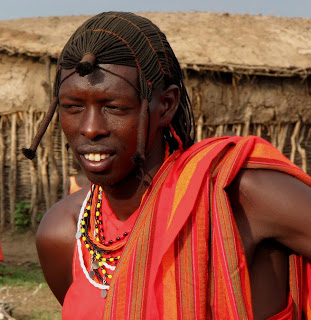What prompted my move to produce a photo story around Maria Shika was my long established fascination with the lives of domestic workers in South Africa South Africa
I am fortunate to come from a home where nannies – as I prefer to call them – were part of my upbringing. As soon as my mother had finished nursing me she set about starting a business from our home garage where she restored antique furniture. She couldn’t pick me up even if she wanted to, because she was permanently covered in paint stripper.
Another Maria was my first nanny. I still see her for tea once a year, but she ill now. I was carried on Maria’s back, tucked into a blanket pouch and fed pap until my cheeks exploded. When compared to my sister who had no nanny and has never even tasted pap, there is almost a foot in height difference between us. I am now taller than my father and we all blame my African mother for overfeeding me.
In the last few years that I have been establishing my own home, I have employed a housekeeper named Maria Shika. I have known her nearly thirteen years as she lives and works for my best friend. Now we share her and Maria comes to transform my home twice a week!
Maria is tiny – standing just 5’2” and her stature is certainly part of her charm. She is the most dignified, respectful woman I have ever met and she has become an intimate part of my life.
As I work from home as a writer, she has learned to tiptoe around me, reading my thoughts when I go looking for missing pens that have been left by the coffee machine and bits of notes and scrap paper that she has arranged in neat piles waiting for me to rediscover.
Every day I go for a long walk through the suburb at sunset and often encounter Maria sitting on the pavement talking with her friends. The Maria I meet outside of work is exuberant, laughing out loud and charismatic. So different to the quiet ghostly figure that stalks my passageways.
I asked her if I could follow her around the house with my camera – for school - I said, and wait for the puzzled look to crease her features. Although she has lived in Joburg fifteen years, she often says she does not understand me. “My life in pictures?” she asks. “Yes, I reply, your life in pictures.” The universal language of pictures cuts me some slack.
After realising my technical inadequacy on my camera after battling the gloomy indoor light without a flash – determined to use those manual settings, a story has begun to take shape.
We have only just begun to scratch the surface of the diverse human being that Maria is. I was privileged enough to be invited to her home in Diepsloot to meet her family and hopefully in time I will visit her in her real roots of Polokwane.
On my way back from a walk this past week, I passed Joanna and Anna who are regular pavement chatters. Joanna had her grandson, Phephile, with her and he was fascinated by the camera.
Maria’s photo story is just beginning, but already it has planted a seed for a broader study of work that will pay homage to all the super nannies in my hood.













